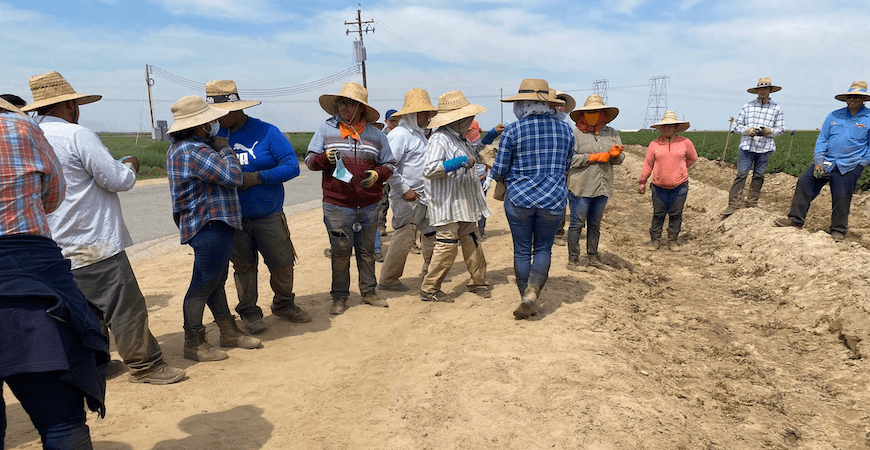
California is getting a closer look at exactly how workers in high-risk industries across the state have borne the brunt of the coronavirus pandemic. For the first time, UC Merced's Community and Labor Center (CLC) has analyzed the increase in the number of pandemic-era deaths of working-age people.
The analysis of data from the California Department of Public Health finds that deaths among Californians aged 18-65 increased by 25 percent during the first 10 months of the pandemic. The number of deaths was recorded as 58,184 in 2019 and that figure went up to 72,554 in 2020. Out of the 14,370 additional deaths, 12,500 of them (87 percent) were workers.
The research found that workers in 10 California industries experienced an over 30 percent increase in deaths during the same 10 months. Those 10 job sectors, which are considered "high risk," are identified as warehousing, agriculture, bars, food processing, wholesale trade, restaurants/food services, nursing care, landscaping, grocery and building services. The state has identified key job sectors at high risk of COVID-19 spread, including agriculture, food processing (including meatpacking), grocery or retail, restaurants/food services and warehouse/logistics.
Warehouse workers had the highest statewide increase in pandemic-related deaths, listed at 57 percent. Between March and December 2020, 334 more warehouse workers died than in the same period in 2019. Agriculture workers ranked second with 565 additional deaths. Food-chain workers were the most affected as employees in food-supply chain industries made up four of the 10 California industries with the highest increase in deaths.
Exactly who are these workers in the top 10 industries with the highest pandemic-era death increases. Many of these job sectors have traditionally had high rates of migrant workers — from food-chain industries, building services (including janitorial work) and landscaping to nursing care facilities. A prior analysis found California's high-risk workers, compared with those in non-high-risk sectors, were far more likely to be immigrants, particularly non-citizens.
Prior research also suggested that these high-risk workers lived in households that were, on average, larger, more likely to have children and twice as likely to have multiple families living under the same roof. California's high-risk workers also earned lower wages, as a whole, had lower home ownership rates and experienced higher rates of poverty.
With this analysis of increases in pandemic-era deaths in high-risk industries, proponents are hoping to call attention to worker deaths on an industry-level basis, as well as express the need for more education and employer compliance.
"The increased rate of pandemic-related deaths among high-risk workers indicates a vulnerable workforce and suggests the need for more worker education and enforcement of worker rights," CLC Executive Director Ana Padilla said. "Education and outreach to low-wage immigrant, non-citizen workers should emphasize their rights as workers, workplace health and safety hazards and protections. Access to the same worker benefits and resources that workers who are citizens receive is also critical for preventing the spread of COVID-19."
Furthermore, rights advocates are urging stronger enforcement of workplace laws throughout all job sectors.
"Public agencies regulating workplace health and safety should be adequately funded and staffed to ensure robust enforcement of workplace health and safety standards across all industries, particularly those continuing to pose a high risk of COVID-19 spread," CLC co-Director and sociology Professor Edward Flores said. "Agency staffing should also reflect the many languages spoken by workers in California's high-risk industries."



